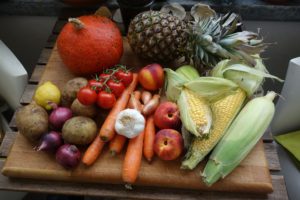 The name “Whole-Food and Plant-Based”, seems to give the idea that you must be a vegan or vegetarian to follow this diet when nothing could be further from the truth. As with everything, the idea of a Whole-Food Plant-Based (WPFB) comes with some misconceptions.
The name “Whole-Food and Plant-Based”, seems to give the idea that you must be a vegan or vegetarian to follow this diet when nothing could be further from the truth. As with everything, the idea of a Whole-Food Plant-Based (WPFB) comes with some misconceptions.
Unlike other diets, WFPB diets and nutritional patterns are fashioned around what they can include rather than what they must exclude. Vegans, for example, exclude meat and animal by-products from their diets. The Atkins diet lowers carbs.
In the case of WFPB it is marked by what they include which are plant based and whole foods. This implies that plant-based foods are preferable, and perhaps should be the main source of your diet, however, whole foods are the other part of that.
Fresh caught Salmon is a whole, nutrient dense food. Rather than focusing on the implication of a WFPB diet being that you must exclude meat, take a look at what you can include and decide for yourself.
Different Diets
Pescatarianism, vegetarianism, mediterranean diet, and even the ketogenic lifestyle are all WFPB diets when done right. Now, before the vegans and vegetarians in the room start cringing over that last one, let’s clear something up.
Not all vegetarian, mediterranean, pescatarian, and ketogenic eating patterns are necessarily WFPB either. Afterall, sodas and bags of deep-fried potato chips carry that vegetarian or vegan stamp. These highly processed foods also contain preservatives, additives, and added sugars.
What is the Point?
WFPB diet isn’t to avoid meat, and remember, this isn’t one of those exclusionary diets. The best place to start is to fill your already existing eating pattern with whole, nutrient dense, and plant-based foods. This isn’t a check box.
Strawberries are whole foods, they’re nutrient dense, and they’re plant based. However, chicken breasts are whole nutrient dense foods. You’re not looking to add or eat only foods which are whole foods and plant based.
The WFPB concept is to add more healthy, and nutritious foods to your diet. Yes, the words run together to imply a plant-based diet of whole foods, when, in-fact, you’re looking for whole foods and plant-based foods. If a food item meets both qualifiers, then that’s great.
 One of the major myths running around about WFPB diets is that they’re carb heavy. This is true. This is also okay. Carbohydrates, especially complex carbs, aren’t necessarily the enemy. The thing you want to avoid are the food laden with simple sugars like soda’s and candy which will cause your blood sugar to sky rocket and then plummet.
One of the major myths running around about WFPB diets is that they’re carb heavy. This is true. This is also okay. Carbohydrates, especially complex carbs, aren’t necessarily the enemy. The thing you want to avoid are the food laden with simple sugars like soda’s and candy which will cause your blood sugar to sky rocket and then plummet.
This is the sort of thing which has been giving carbohydrates a bad name, but the fact is that your body needs carbs to burn as glucose. There’s nothing wrong with complex carbs.
Now that’s said, a ketogenic lifestyle can be designed around a WFPB option. Most usually are. It’s just that these folks need to burn ketones rather than glucose, or want to, for whatever reason. There are plenty of plant-based options for dietary fat like Avocados and olives which meet the whole-food requirement.
Bottom Line
WFPB diets aren’t about which fuel you burn or whether you eat meat or not. They’re about shoving as many types of foods into your available diet as possible so you can focus on eating nutritious, nutrient dense, whole, and plant-based foods rather instead of the highly processed foods most of us reach for more often than we should.














